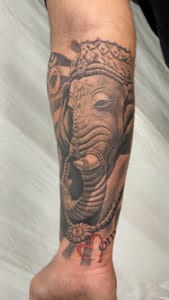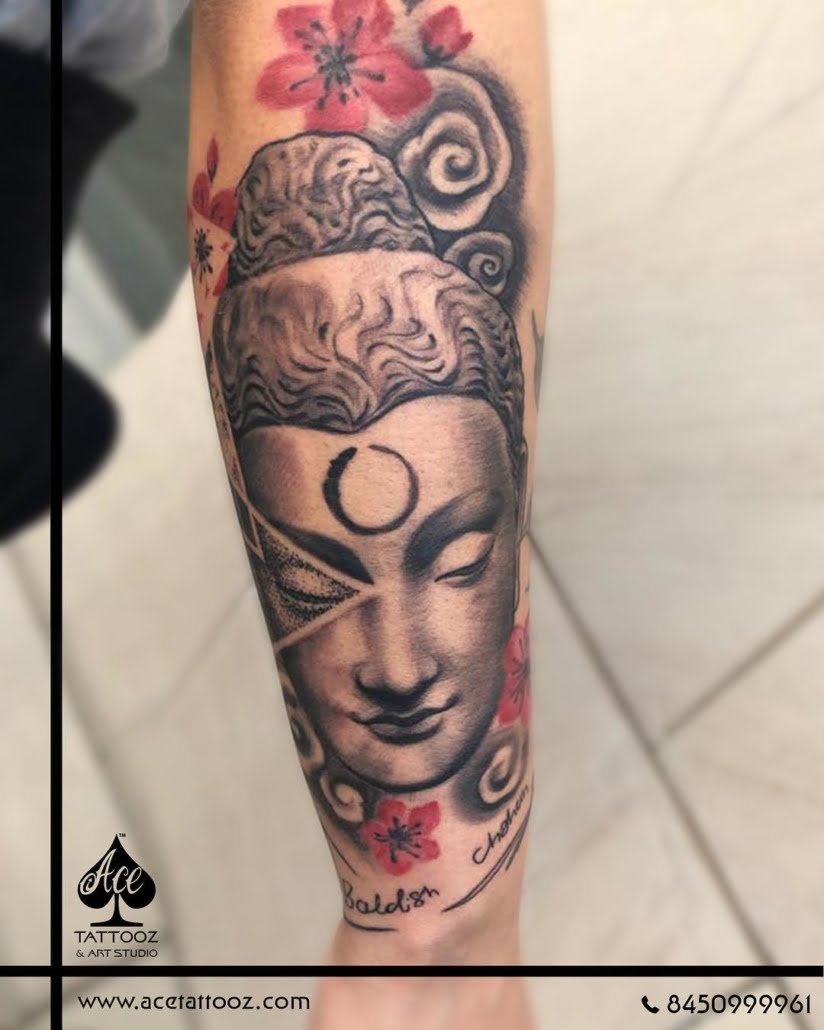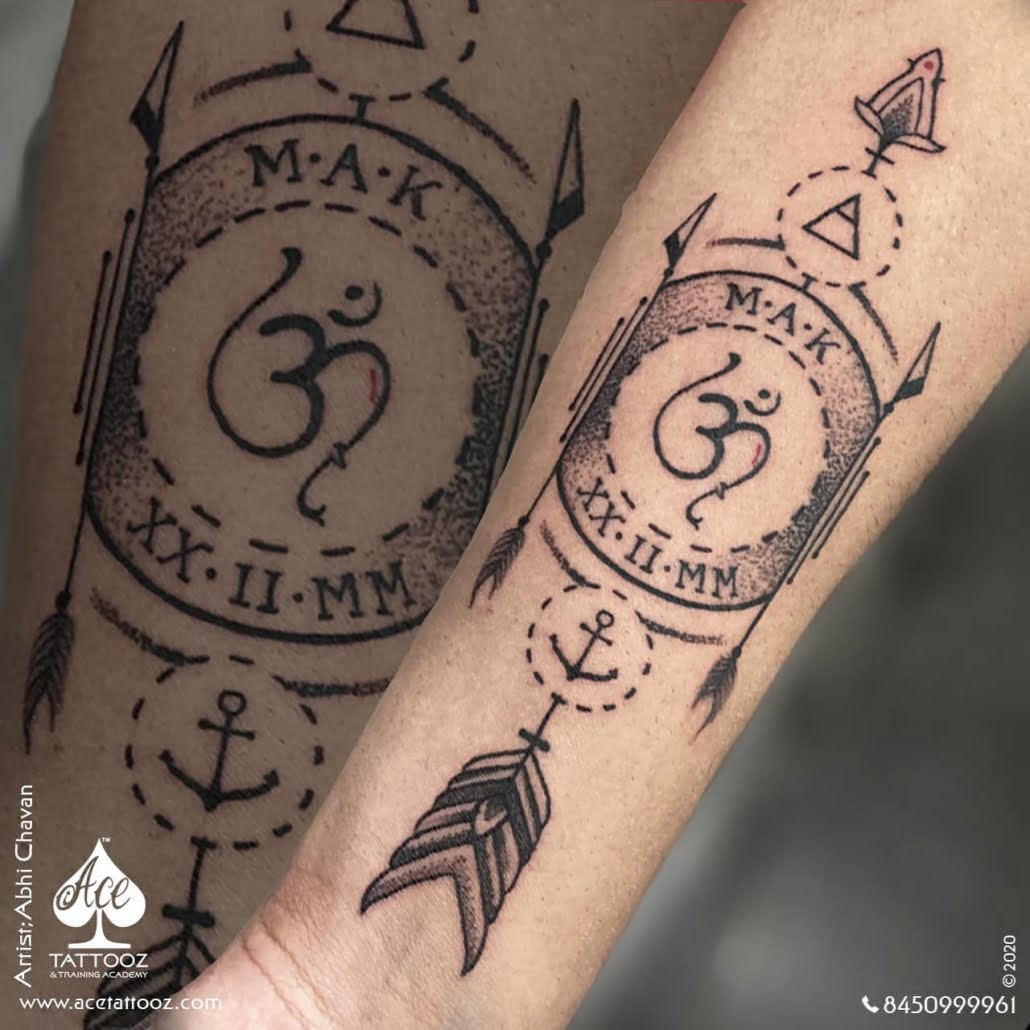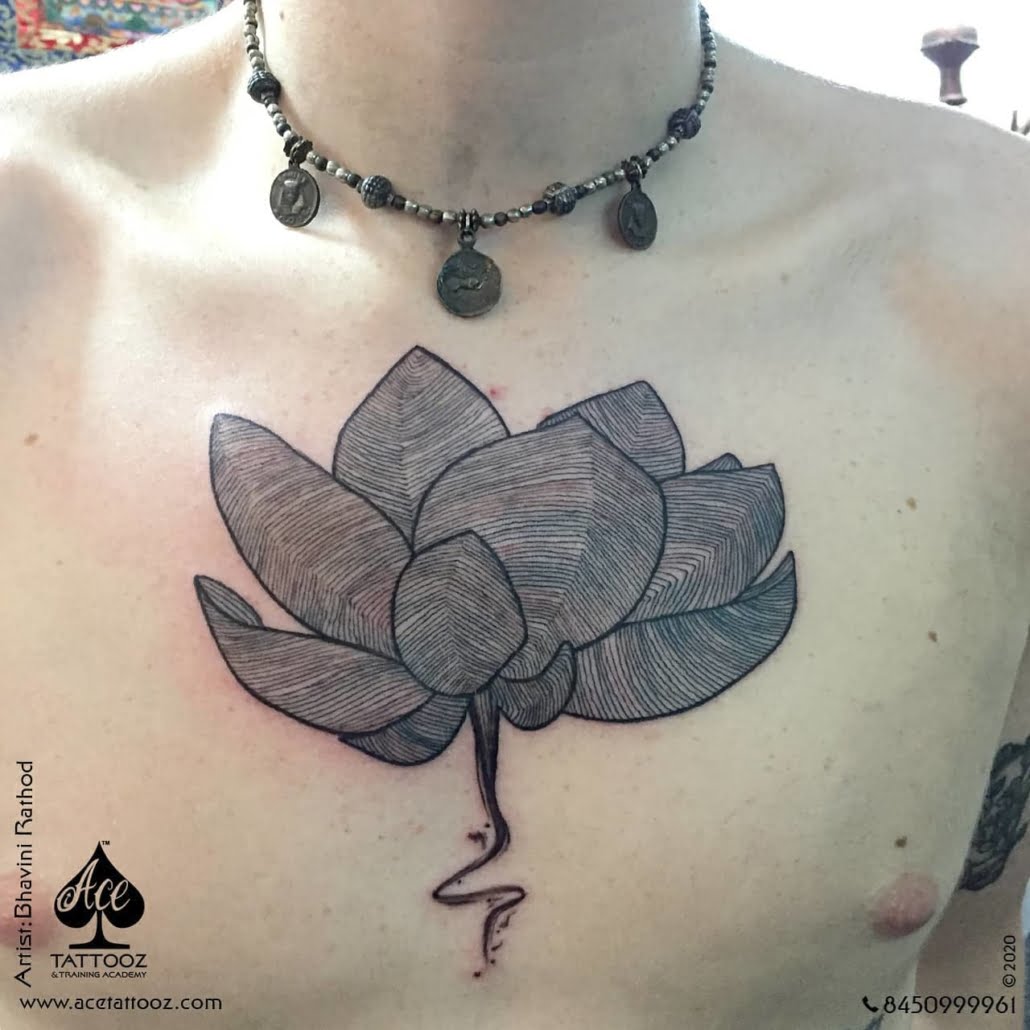There is growing affinity of urban Indians to body tattoos. Popular in Indian youth during the early phase were abstract symbolic designs. With changing trends, there is a clear shift in preference from the roses and barbed wire designs to more spiritual forms of deities, symbols of deities, or religious verses from holy books are inked. Realistic depiction of portraits and use of watercolours is the buzz in the world of body art form. The rising trend of using spiritual tattoos as a reflection of one’s faith and ideology is immensely popular with millennials.
Tattoos are an extension of a person’s expressions and have a profound spiritual effect on the individual getting tattooed. The connection between the tattoo and the individual elicits emotions rather than the tattoo design.
In the past few years, Bollywood celebrities like Ajay Devgn and Esha Deol are embracing inking spiritual tattoos. While Ajay sports a Lord Shiv tattoo on his left pectorals, Esha flaunts her Om tattoo on the back. Not only Bollywood, but Hollywood celebrity Angelina Jolie has also tattooed a famous Buddhist prayer on her left arm. What started as a tattoo statement by the celebrities is now adopted by the youth of India in a spiritual form of their preferred body art.
While the tattoo design itself has no spiritual or magical powers, they seem to invoke a sense of consciousness and spiritual feelings in both the person tattooed and the tattoo artist. Nikhil Bhanushali of Ace Tattooz says “Spiritual tattoos have been trending in India for some time now. Designing and carving a tattoo for our clients in it is a very enriching experience for both us and the client. The kind of vibe one feels after getting inked is very positive and stays in their subconscious mind. I firmly believe in the quote You do not choose your tattoo, your tattoo chooses you. Keeping that in mind, we make sure to personalize each design so as to meet the client’s expectations.” Ace tattooz are the artistic genius behind renowned Bollywood choreographer Remo Dsouza’s spiritual tattoos.
Truly said, there are cultures where tattoos are carved with ongoing religious rituals. Themes of positivity, energies, and balance are often tattooed or included as a part of the tattoo. Whether these have any effect on the tattoo itself is debated, one cannot negate the emotions invoked upon glancing at the magnificent body art.
While trends in tattoos are unconventional considering the permanency of the body art, certain designs convey everlasting meaning. Revitalizing symbols like Om, Hand of Hamsa and Lotus may indicate an expression of the spiritual word. Some designs are more commonly sought after. So if you want a spiritual tattoo for yourself, you can definitely have a look at our work.
Om is a Sanskrit word consisting of three sounds in a single syllable. It refers to the ever-evolving self and the universe, the beginning and the end. Om is a syllable of significance in Hindu, Jain, Buddhist, and Sikh religions.
Om tattoos depict the reverence for existence, kindness, compassion and equanimity of the universe (Brahmand).
Lotus has a complex meaning attached to it. It is often regarded as the essence of purity in the pond full of worldly desires. Lotus is sacred and symbolizes detachment to the worldly desires and path to enlightenment in Buddhism. It may also represent reincarnation in certain cultures.
Lord Ganesh is often called as Vighnaharta (remover of obstacles) and Sukhharta (Lord of success). He is the symbol of intellect and wisdom. Depending on the depiction of Lord Ganesha, various meanings are interpreted. The broken tusk of Lord Ganesha (broken by the Lord Himself to write Mahabharata) is the symbol of sacrifice. The axe in His hands represents the break of worldly bonds and the noose on the other hand is to inch towards the path of success.There are numerous forms of Lord Ganesha depending on the region, culture, and religion. Each of these has their own significance.
Lord Buddha has always been an embodiment of solitude, meditation and spirituality. He depicts love, peace, and empathy for all. A Buddha tattoo often represents his tranquil state in the world.
Lord Shiva is known to be the destroyer. He is called Mahadev (God of the Gods). The symbols, the design and the placement of the tattoo are said to have unique meanings. He is the destroyer of the evil within us and encourages positivity in life.
The popular symbols of Lord Shiva are His third Eye, the Trishul, the snake coiled around his neck, the river Ganga. All the elements can be combined or used individually in tattoos. The Shiv-Shakti design represents the masculine and the feminine. The masculine energy is said to be of rage and the feminine energy is said to be calm.
The symbol Unalome is used as a tattoo or an element of a tattoo. It is the sign of Arahants or the Enlightened ones in the Buddhist religion. In the Hindu religion, it represents the Third Eye of Lord Shiva. A half-moon or lotus is commonly placed above the Unalome.
The Hindu meaning shows the spiral as the Lord’s eye, the ascending line, and knots are spiritual milestones and ultimately reaching salvation (Moksha). The Buddhist meaning is slightly different where the swirls show the person entangled in the conscious mind and then finding the path of the Enlightened. It is a symbol of wisdom, clarity, focus, and of spiritual advancement.
Religious quotes from Holy Scriptures are often selected as a source of strength and the emotions it may invoke. The quotes selected depend on the person getting tattooed. Some of them are the Gayatri Mantra, quotes from Bhagvad Gita, and from the Bible.
Yantra tattoo designs originated during the reign of Khmer empire in India. Pali (the then local language) was incorporated in designs along with animal, geometric and deity elements. They are widely seen in South East Asia and are believed to be a symbol of fortune, wellness, success, and even magic!
Mandalas are usually geometric tattoos seen in circular, symmetrical shapes. Depending on the culture the meanings of Mandalas differ. In Hindu culture, it is considered the centre point of focus and placed in areas of meditation. The balance of the body and the mind is the Buddhist interpretation. There is great scope for personalization as no two Mandalas look the same.














